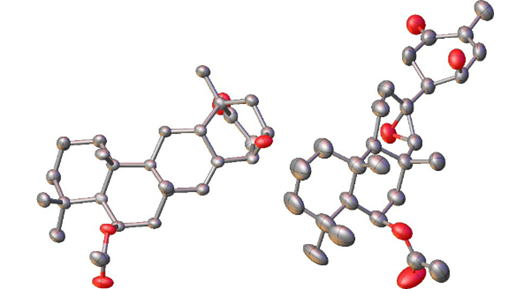Advantages:
Summary:
Respiratory syncytial virus (RSV) is a significant global health concern responsible for bronchiolitis and pneumonia in infants and toddlers under the age of two, and sometimes, severe cases of pneumonia, asthma and chronic obstructive pulmonary disease in adults. Currently available treatment options have limitations and come with significant drawbacks. Hence, there is a pressing need for new small molecule treatments to combat the highly contagious RSV.
Our researchers address the critical need for RSV treatments through the discovery of novel sesterterpenes from the Antarctic sponge Suberites sp. With compounds like neosuberitenone and suberitenones, we have unveiled a new class of sesterterpenes with unparalleled selectivity against RSV, opening the door to the development of more effective and affordable treatments.

X-Ray Crystal Structure of neosuberitenone A and Suberitenone E
Desired Partnerships:
- License
- Sponsored Research
- Co-Development